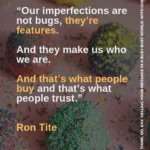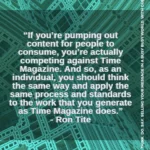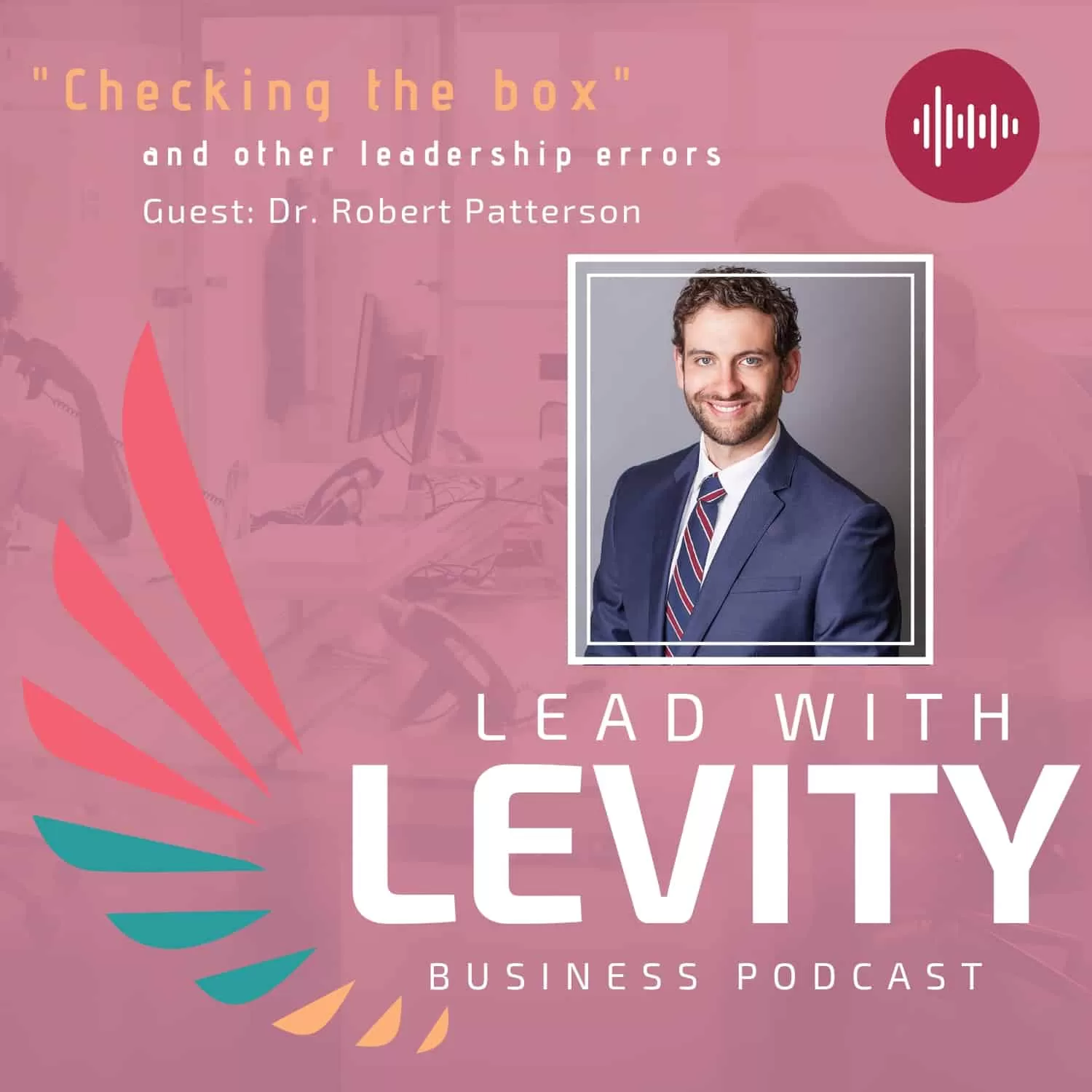
Episode: THINK. DO. SAY. Selling your message in a busy busy world
Welcome to the Lead with Levity podcast. My goal is to interview a diverse set of leaders who are interested in making a big impact on the employee experience and willing to share their perspectives on levity at work.
Today we will be joined by award-winning advertising professional and author, Ron Tite!
CEO of Church+State, Ron Tite notes that content creators are competing for the consumer’s time, and so he focuses on bringing only good advertising/authentic content to consumers.
TIME STAMPS
[03:31] About Church+State
[05:15] Best techniques for internal marketing — How to inspire employees to get on board
[09:05] Building trust by being authentic i.e. being honest and imperfect
[13:25] How corporate buzzwords can erode trust
[16:09] Ron talks about the dark side of marketing
[22:16] How can organizations compete for attention with a workforce that is used to having messaging that is targeted specifically for them?
[27:08] Viewing employees from a marketing perspective | What makes a great brand?
- What do you firmly believe in? [27:43]
- What actions do you take to reinforce that belief? [29:45]
- The marketing message i.e. How do you then talk about it? [29:56]
Quotes
— On Church+State:
- “The phrase “the separation of church and state” is typically applied to the relationship between advertising and content. We believe that, now, any ad can be a piece of content if it’s good enough, and any piece of content can be an ad if it’s authentic enough.”
- “If you’re pumping out content for people to consume, you’re actually competing against Time Magazine. And so, as an individual, you should think the same way and apply the same process and standards to the work that you generate as Time Magazine does.”
- “It doesn’t matter whether you’re a brand, a media company, or a person, we’re all just competing for time.”
—- On convincing employees to join you
- “New behaviors are what lead to growth.”
- “How do I motivate and inspire people to join me? That is based on what you think, what you do, and what you say. People need to know exactly what you believe in, they need to see that you follow that up with actions that reinforce that belief, and you need to talk about it in an honest and imperfect way.”
—- On being honest and imperfect
- “There are two types of honesty. The first is the external honesty with your stakeholders — You don’t lie to your customers and you don’t lie to your employees. The second one is more powerful, and that is being honest with yourself.”
- “Authenticity is being comfortable with your imperfections. To get people to follow you, you need to build trust. And to get trust, you need to be authentic.”
- “Our imperfections are not bugs, they’re features. And they make us who we are. And that’s what people buy and that’s what people trust.”
— On the dark side of marketing
- “At the heart of advertising and marketing is understanding that people need to buy things. They need to buy things for rational reasons, and they need to buy things for emotional reasons.”
- “A perfect product is the product where someone says, “This is exactly what I need,” and it is exactly delivered at the time that they want or need it.”
- “Truly effective advertising is to the right person at the right time with the exact product delivered with the right emotions that they exactly need in that moment.”
— On personalization/customization
- “Customization and personalization allow you to cut through [the noise]. There are two ways to do that. One is to have the data infrastructure that allows you to collect the relevant data. The second part is you need to empower your people and your people need to have a genuine desire to connect with another human being.”
- “There are four buckets of the heavy data approach. One is you need to be able to collect the relevant data — you have a process where people are filling out stuff OR you’re tracking things. The second is some process or tool to analyze that. The third part is you need to gather insight from that data. The last part is a process by which you can customize the stuff you’re talking about to match the insights you just gathered from the data.”
— On employee experience from a marketing perspective
- “Great brands are based on what they think, what they do, what they say.”
- “Great leaders are based on what they think, what they do, what they say. You need to believe in something beyond the thing you sell.”
- “What is your purpose? “To make the best product that we can make” is not purpose.”
- “In 1970, Milton Friedman wrote a paper that the sole purpose of a corporation is to increase and maximise profits. Five weeks ago, The Business Roundtable decided that the corporation now has five constituents – its customers, its employees, its partners, its shareholders, and its community.”
Get Connected
Ron Tite: Ron’s Website | Ron’s Twitter | Ron’s Instagram | Ron’s LinkedIn
Other Links: Church+State website | The Coup podcast
Resources Mentioned in the Episode:
- “Think. Do. Say.: How to seize attention and build trust in a busy, busy world” by Ron Tite
- “Statement on the Purpose of a Corporation” The Business Roundtable
- “181 Top CEOs Have Realized Companies Need a Purpose Beyond Profit” Harvard Business Review
Visit https://www.leadwithlevity.com if you’re interested in learning more about this concept or connect with us on social media to get updates on new shows.
- LinkedIn: https://www.linkedin.com/company/leadwithlevity
- Facebook: https://www.facebook.com/leadwithlevity
- Instagram: https://www.instagram.com/leadwithlevity/














